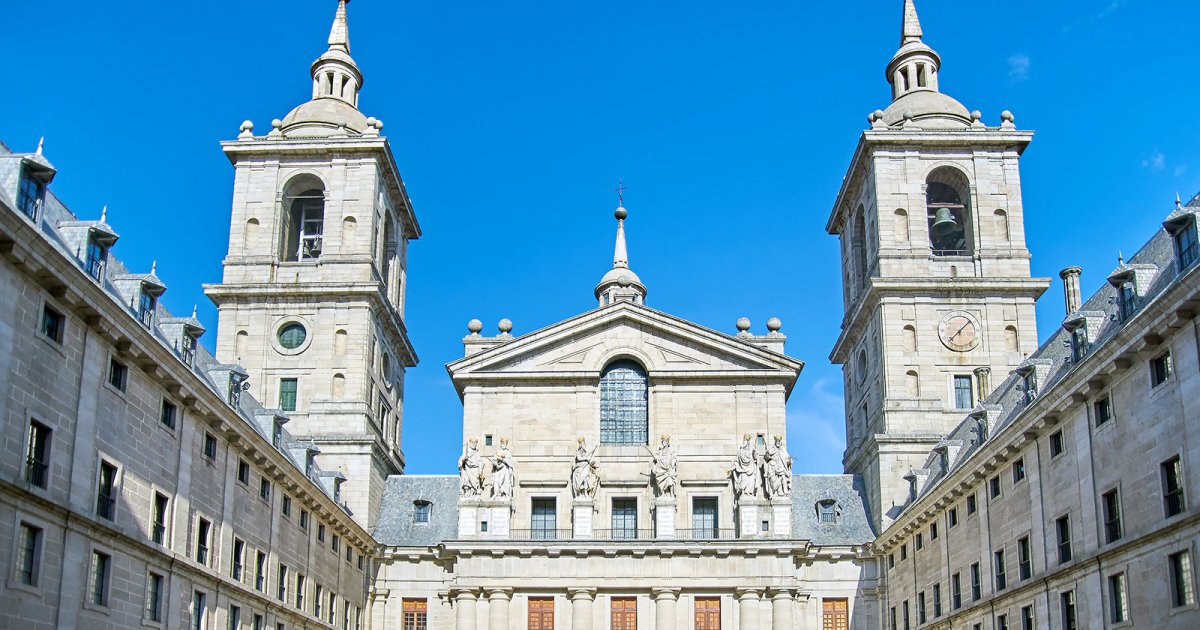ESCORIAL, Basilica
 Language: English / USA
Language: English / USA
You are now in the church that is the heart and center of the Escorial, which is a smaller version (but not much!) of St. Peter's Basilica in Rome. You might note a certain amount of simplicity here as well: a linear façade is set back between two towers, with a sober Classical portal and six statues of the Old Testament monarchs symbolizing the legitimate biblical ancestry of the king's dignity.
Once you enter, you'll almost feel lost in the huge space: just think, the basilica's interior is home to an impressive fifty altars!
The impressive "retablo" at the back of the church immediately catches your eye, this work of art above the main altar which includes sculptures and painting is made of precious materials such as onyx, jasper, and bronze. At the center, a dramatic canvas by no less than Titian depicts the Martyrdom of San Lorenzo, who you may recall is the saint to which the entire Escorial is dedicated. You might also notice a large presence of Italian artists: Genoese painter Luca Cambiaso did the frescoes of the choir and Neapolitan Luca Giordano painted the vaults of the naves a century later, at the end of the seventeenth century. Everything here is gigantic: the most striking detail is perhaps the choir's lectern.
The king had his own seat on the podium, where you can see a row of wooden seats custom-designed by Juan de Herrera.
If you want to see what Philip II looked like, you can see him kneeling in prayer and surrounded by his family in a gilded bronze statue right beside the altar; a similar group of sculptures, also in golden bronze, depicts the family of his great father Charles V on the opposite side of the choir.
I recommend also visiting the rich sacristy: the large room is richly decorated with frescoes, sacred furnishings, reliquaries, and wardrobes for priestly garments. On the back wall a large canvas represents the same sacristy, creating a fascinating optical illusion of real and painted spaces.
FUN FACT: go to the first chapel on the left to see the elegant and much admired marble Crucifix on the altar, which was carved by the Florentine sculptor Benvenuto Cellini; when seen with a certain light, the torso of Christ seems to take on the appearance of a mysterious face.



